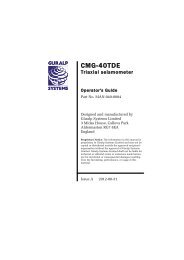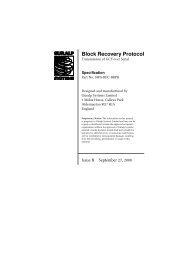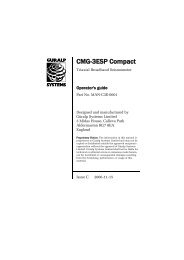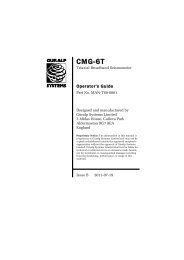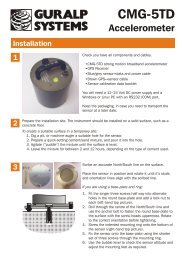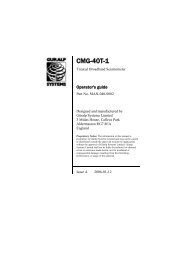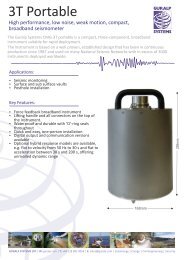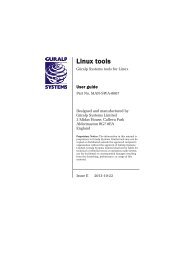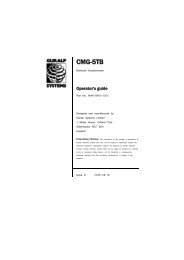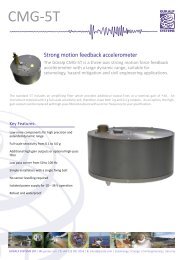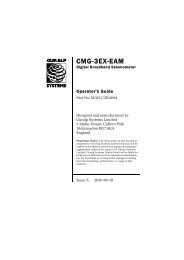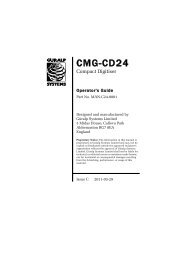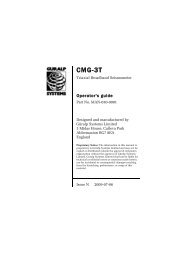ART 3.0 - Güralp Systems Ltd
ART 3.0 - Güralp Systems Ltd
ART 3.0 - Güralp Systems Ltd
Create successful ePaper yourself
Turn your PDF publications into a flip-book with our unique Google optimized e-Paper software.
<strong>ART</strong><br />
1 Introduction<br />
<strong>ART</strong> <strong>3.0</strong>, <strong>Güralp</strong> <strong>Systems</strong>' Strong-Motion Analysis and Research<br />
Tool is a windows program which allows users of seismometers<br />
(accelerometers or velocimeters) produced by <strong>Güralp</strong> <strong>Systems</strong><br />
<strong>Ltd</strong>, to process and analyze their recorded data for engineering<br />
seismology and earthquake engineering purposes. The timehistories<br />
can be exported in a number of different strongmotion<br />
record formats that are currently in use today.<br />
<strong>ART</strong><strong>3.0</strong> is a major update of the second version of <strong>ART</strong><br />
(<strong>ART</strong>2.0), which was released in 2006. A number of<br />
improvements were made following requests received from<br />
users, which are listed in section 5.1, page 60.<br />
<strong>ART</strong> <strong>3.0</strong> is supplied in the standard distribution of Scream!<br />
versions 4.5 and later. It is also compatible with older versions<br />
of Scream!.<br />
<strong>ART</strong> works closely with Scream! to make analysing seismic data<br />
easy. Scream!'s visualization and filtering capabilities allow you<br />
to view time series and quickly identify events. Strong-motion<br />
records can then be directly imported into <strong>ART</strong> from Scream!<br />
by selecting the appropriate portion of the record in Scream! -<br />
this will automatically start <strong>ART</strong>. Previously recorded data in<br />
<strong>Güralp</strong> Compressed Format (GCF) can be read in from prerecorded<br />
files and analyzed. In addition, data can be imported<br />
into <strong>ART</strong> via a modem.<br />
Currently the following functions, which are important for<br />
engineering seismologists and earthquake engineers, are<br />
supported (in addition most of these functions allow selection<br />
of multiple time-histories so a comparison between records is<br />
possible).<br />
• plotting uncorrected acceleration, velocity and<br />
displacement against relative or absolute time;<br />
• automatic correcting of recorded time-history for<br />
instrument response to obtain ground acceleration;<br />
• filtering of acceleration time-history using user-defined<br />
filters;<br />
• plotting corrected acceleration, velocity and<br />
displacement against relative or absolute time;<br />
4 Issue C




